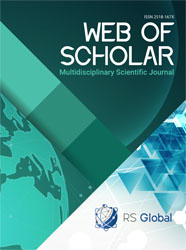РОЗШИРЕННЯ СФЕРИ ЗАСТОСУВАННЯ КРИМІНАЛЬНОГО ЖАРГОНУ
Abstract
The article analyses the functioning and stylistic peculiarities of criminal slang in the language of mass media at structural and semantic level; ways of inclusion of slang into the system of modern Ukrainian language are traced; expressive and emotional potential of slang in modern journalistic discourse is analyzed; semantic modifications and functional specificity of slang and its influence on modern Ukrainian language were found out; it was mentioned, that figurative senses of verbs in criminal slang are socially conscious, since they are distinguished in phrases, sentences, contextual, but most of them are not fixed in dictionaries; it was determined, that despite its initial isolation and mystery, criminal slang significantly fills up modern spoken language; criminalization of different kinds of discourse, that significantly promote to the forming of “general slang”, occurs.
References
Быков В. Б. Жаргоноиды и жаргонизмы в речи русскоязычного населения («Новые» слова и значения в современном русском языке). Русистика. Берлин, 1994, № 1-2. С. 85-95. http://www.classes.ru/philology/bYkov-94.htrn.
Елистратов B.C. Арго и культура (на материале московского арго): Автореф. дис. ... канд. филол. наук. М., 1993. 22 с.
Колесов В.В. Язык города. Изд. 2-е, стереотипное. М.: Едиториал УРСС, 2005. 192 с.
Кронгауз М.А. Русский язык на грани нервного срыва. М.: Языки славянских культур, 2008. 229 с.
Лихачев Д.С. Черты первобытного примитивизма в воровской речи. Записки. Тверь: ТО Рос. фонда культуры, 1993. С. 355 – 405.
Ставицька Леся Про взаємодію жаргону і сленгу. Українська мова та література. 2000. № 15 (175). С.8.
Українська мова, 2000: Українська мова: Енциклопедія / [Редкол.: Русанівський В.М. (співголова), Тараненко О.О. (співголова), Зяблюк М.П. та ін.] – 2-ге вид., випр. і доп. К.: Вид-во “Укр. енциклопедія”, 2000. 752 с.
Views:
279
Downloads:
400
Copyright (c) 2019 The author

This work is licensed under a Creative Commons Attribution 4.0 International License.
All articles are published in open-access and licensed under a Creative Commons Attribution 4.0 International License (CC BY 4.0). Hence, authors retain copyright to the content of the articles.
CC BY 4.0 License allows content to be copied, adapted, displayed, distributed, re-published or otherwise re-used for any purpose including for adaptation and commercial use provided the content is attributed.











